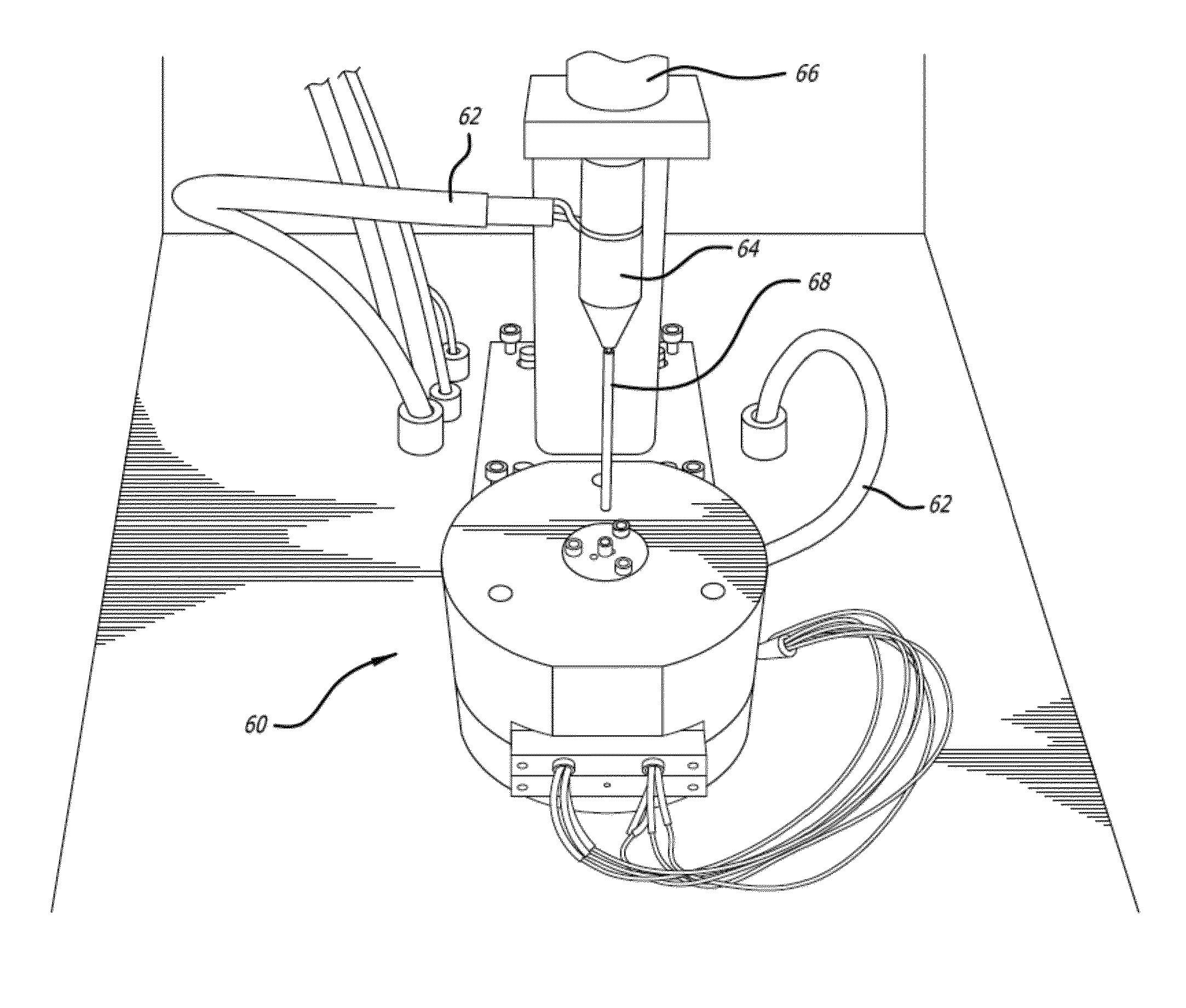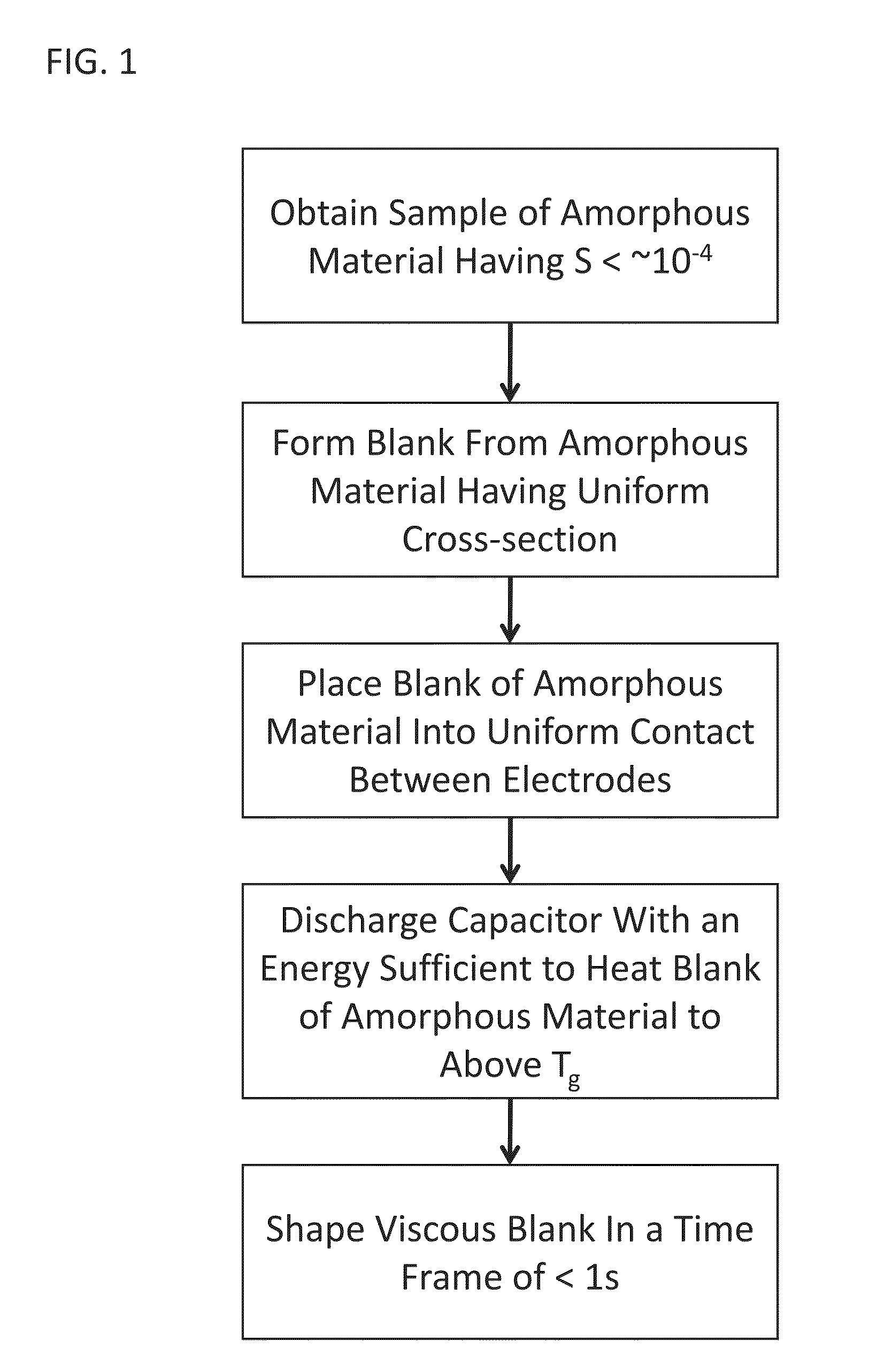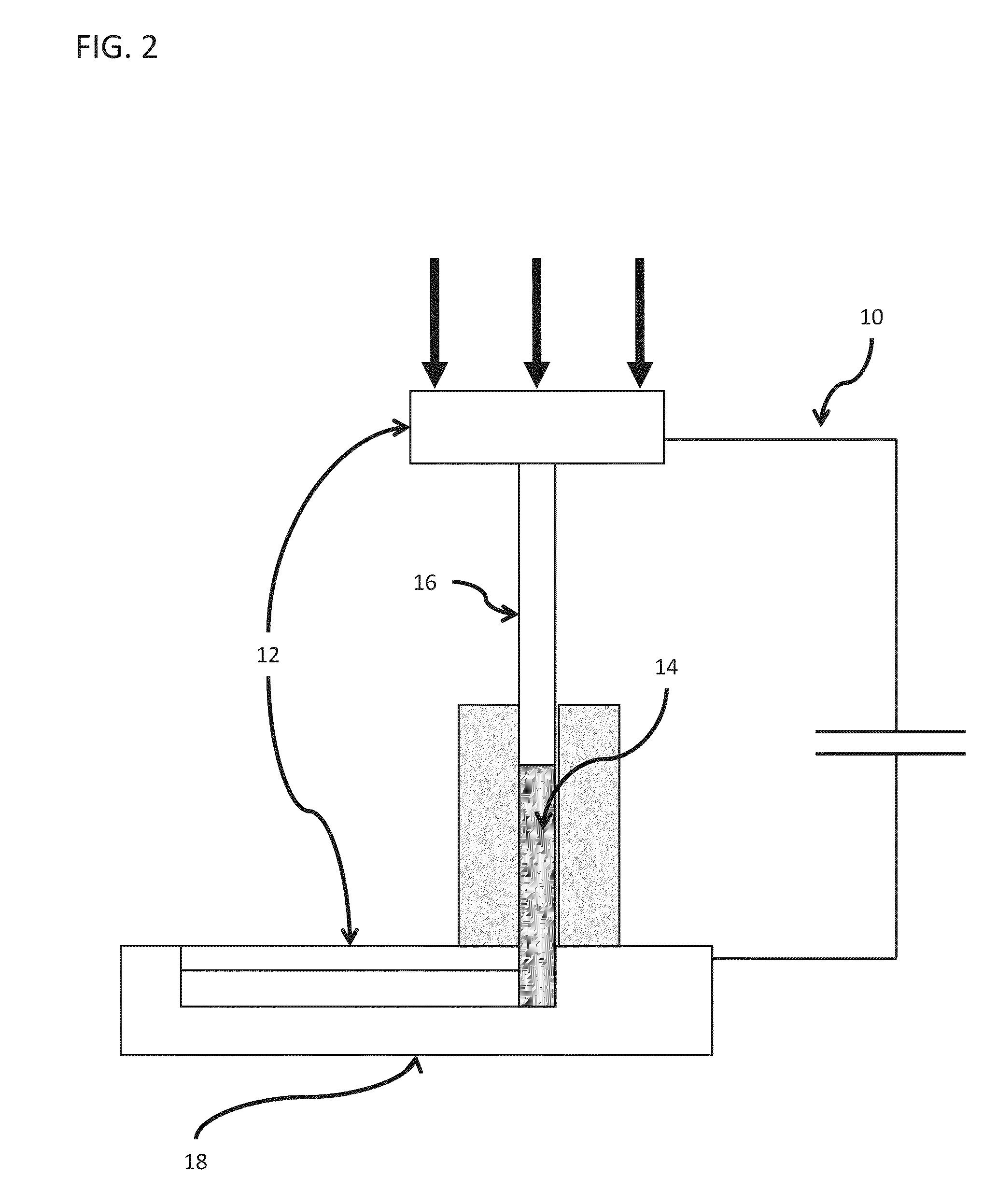Injection molding of metallic glass by rapid capacitor discharge
a capacitor discharge and injection molding technology, applied in the direction of foundry moulds, metal-working apparatus, heat treatment process control, etc., can solve the problems of limited use of early amorphous alloys as bulk objects and articles, limited size of early amorphous alloys, and inconvenient casting processes for such high cooling rates. , to achieve the effect of avoiding failure by necking
- Summary
- Abstract
- Description
- Claims
- Application Information
AI Technical Summary
Benefits of technology
Problems solved by technology
Method used
Image
Examples
example 1
Study of Ohmic Heating
[0132]To demonstrate the basic principle that for BMGs capacitive discharge with Ohmic heat dissipation in a cylindrical sample will give uniform and rapid sample heating a simple laboratory spot welding machine was used as a demonstration shaping tool. The machine, a Unitek 1048 B spot welder, will store up to 100 Joules of energy in a capacitor of ˜10 μF. The stored energy can be accurately controlled. The RC time constant is of order 100 μs. To confine a sample cylinder, two paddle shaped electrodes were provided with flat parallel surfaces. The spot welding machine has a spring loaded upper electrode which permits application of an axial load of up to ˜80 Newtons of force to the upper electrode. This, in turn permits a constant compressive stress ranging to ˜20 MPa to be applied to the sample cylinder.
[0133]Small right circular cylinders of several BMG materials were fabricated with diameters of 1-2 mm and heights of 2-3 mm. The sample mass ranged from ˜40 ...
example 2
Injection Molding Apparatus
[0137]In another example, a working prototype RCDF injection molding apparatus was constructed. Schematics of the device are provided in FIGS. 11a to 11e. Experiments conducted with the shaping apparatus prove that it can be used to injection mold charges of several grams into net-shape articles in less than one second. The system as shown is capable of storing an electrical energy of ˜6 KJoules and applying a controlled process pressure of up to ˜100 MPa to be used to produce small net shape BMG parts.
[0138]The entire machine is comprised of several independent systems, including an electrical energy charge generation system, a controlled process pressure system, and a mold assembly. The electrical energy charge generation system comprises a capacitor bank, voltage control panel and voltage controller all interconnected to a mold assembly (60) via a set of electrical leads (62) and electrodes (64) such that an electrical discharge of may be applied to the...
example 3
Apparatus for Injection Molding of Metallic Glasses
[0143]As described briefly above, the RCDF method of the current invention can be used to heat and shape a wide-variety of metallic glasses utilizing dissipation of electrical current to uniformly heat a metallic glass charge at time scales far shorter than typical times associated with crystallization, and that this technique may be used for a number of processes, including injection molding. Injection molding of polymeric materials involves uniform heating of polymeric feedstock, usually in the form of pellets, to temperatures above the softening (glass-transition) point reaching viscosities in the range of 100 to 10000 Pa-s, and subsequently with the application of a force, delivered for example with a hydraulically driven plunger, force the melt into a die cavity having a desired shape where it is formed and simultaneously cooled to below the softening point. Like polymers, metallic glasses also soften above their glass-transiti...
PUM
| Property | Measurement | Unit |
|---|---|---|
| temperature | aaaaa | aaaaa |
| electrical energy | aaaaa | aaaaa |
| viscosity | aaaaa | aaaaa |
Abstract
Description
Claims
Application Information
 Login to View More
Login to View More - R&D
- Intellectual Property
- Life Sciences
- Materials
- Tech Scout
- Unparalleled Data Quality
- Higher Quality Content
- 60% Fewer Hallucinations
Browse by: Latest US Patents, China's latest patents, Technical Efficacy Thesaurus, Application Domain, Technology Topic, Popular Technical Reports.
© 2025 PatSnap. All rights reserved.Legal|Privacy policy|Modern Slavery Act Transparency Statement|Sitemap|About US| Contact US: help@patsnap.com



